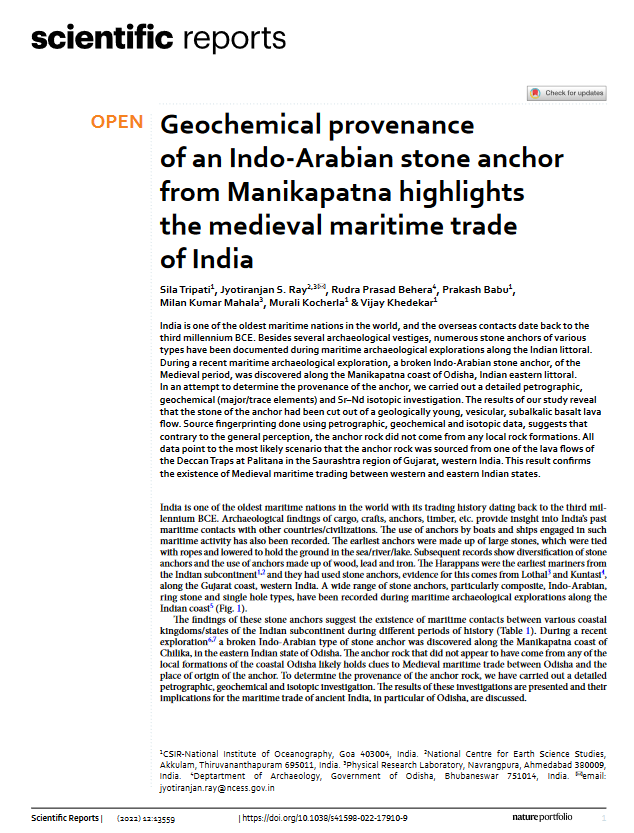
India is one of the oldest maritime nations in the world, and the overseas contacts date back to the third millennium BCE. Besides several archaeological vestiges, numerous stone anchors of various types have been documented during maritime archaeological explorations along the Indian littoral. During a recent maritime archaeological exploration, a broken Indo-Arabian stone anchor, of the Medieval period, was discovered along the Manikapatna coast of Odisha, Indian eastern littoral. In an attempt to determine the provenance of the anchor, we carried out a detailed petrographic, geochemical (major/trace elements) and Sr-Nd isotopic investigation. The results of our study reveal that the stone of the anchor had been cut out of a geologically young, vesicular, alkali basalt lava flow. Source fingerprinting done using petrographic, geochemical and isotopic data, suggests that contrary to the general perception, the anchor rock did not come from any local rock formations. All data point to the most likely scenario that it was sourced from one of the Deccan Traps lava flows of Palitana in the Saurashtra region of Gujarat, western India. This confirms the Medieval maritime trading between western and eastern Indian states.
Bibliographic Info: Tripati, S., Jyotiranjan S. Ray., Behera, R. P., Prakash Babu., Mahala, M. K., Murali Kocherla., Vijay Khedekar. (2022). Geochemical provenance of an Indo-Arabian stone anchor from Manikapatna highlights the medieval maritime trade of India. Scientific Reports, 12(1), 1-14.
https://doi.org/10.1038/s41598-022-17910-9.




 RTI Act
RTI Act